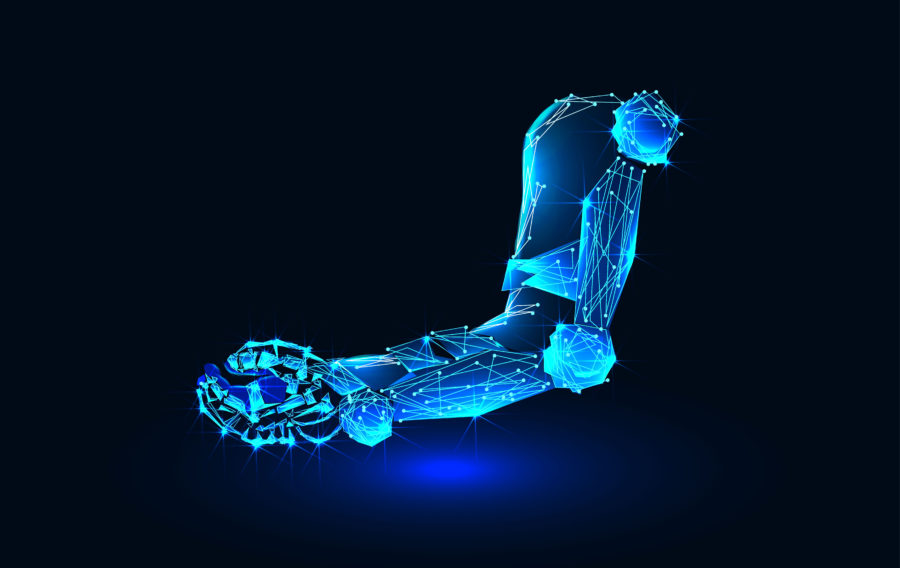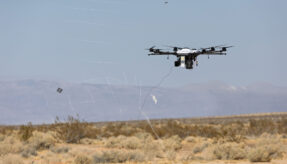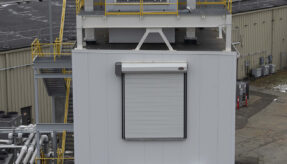
Trends in defence innovation often begin in science fiction speculation, with one of the most recent field being exoskeleton technology. Defence ministries across the world have been working on perfecting exoskeleton suits that improve soldier’s endurance and abilities, something that has been a common trope in fiction for decades. Now, thanks to lightweight but strong materials and research into how human bodies move and can be improved, real-world technology is finally catching up.
Exoskeleton suits are yet to be seen on the battlefield but defence researchers say they could be introduced as a standard military issue. In the US, the DOD is investing in the Lockheed Martin ONYX Suit.
The DOD is experimenting with the lower-body suit and another model at the Natick Soldier Systems Center in Massachusetts. The Russian military has created a suit to enhance overall soldier ability with weapons maker TsNiiTochMash. The British Ministry of Defence (MOD) has expressed interest in flight suits and recently in France inventor Franky Zapata was able to demonstrate French military ambitions by flying over the English channel with a jet-powered hoverboard and suit.
This technology is largely made possible due to advances in material science. Lighter, more durable materials make exoskeletons easy to wear and battery technology means they can be powered up for longer. They can also be made more comfortable for the wearer, an essential factor on difficult missions. In the UK, designers are looking for new polymers to produce lighter frames. Researchers are aiming for intelligent suits that can predict movement through nerve tracking to make movement easier. Most exoskeleton designs thus far have used carbon fibre composites in their construction, with most new prototypes using plastic and metal.
The INDEGO design, used to rehabilitate patients with spinal injuries, is made with carbon fibre feet braces with the rest made from metal, polycarbonate plastic, and ABS. Japanese robotics company Cyberdyne has looked at polycarbonate and magnesium as a way of building cost-effective models with high tensile strength. Battery life and power efficiency also play a large part in what materials are used in exoskeletons. The US military’s latest acquisition, the Guardian XO, features hydraulics and rechargeable 400-watt battery packs that can run for up to eight hours. The US is aiming to use the suit for shipyard building as it grants the wearer higher strength, with the ability to lift weights of up to 90kg, and is also expected to be used in mining as well as other construction.
The technology can be used to help search and rescue operations and emergency service employees save more lives. By improving stamina and strength, personnel will no experience exhaustion as fast and can carry heavier weights. They can also be fitted with safety and protective features such as breathing apparatus and fabric such as kevlar. Exoskeletons can reduce the metabolic cost of movement by around 25%, meaning that the wearer can move for longer. This can make all the difference in rescue situations. In Singapore, firefighters have used the pneumatic Aberon exoskeleton from TRIGEN automotive to reduce the strain of carrying heavy equipment up flights of stairs during operations. The design redistributes the weight of equipment, oxygen masks, and gear around the exoskeleton and into the ground, reducing the strain on firefighters. At the University of Leeds, a prototype was created for an exoskeleton to assist in search and rescue missions.
The CompactRIO is designed to increase strength and be easily portable after a disaster, allowing the wearer to clear debris and reach difficult-to-access places easier than heavy equipment and machinery would. The model tracks movement through a sensitive force resistance sensor which activates corresponding muscle sensors. The level of muscle strain is combated with a positive signal generated by a pressure valve. This ensures energy is being conserved while the wearer is carrying lighter loads, meaning the power can last longer leading to more successful missions that can save more lives.
The technology helps solve an ongoing problem of soldiers carrying heavy equipment and gear, often in extreme environments like deserts and the arctic. Exoskeletons have also been explored as a way of helping factory and construction workers carry heavy loads and avoid injury. The ONYX system straps to the feet and legs of soldiers to improve lower body strength. Soldiers can be carrying up to 100lbs of gear while walking for extended periods.
In the US army, joint injuries are increasingly common. While the DOD has also invested in ground robots to carry heavy equipment, exoskeletons are usually the better option as they are smaller and more portable. ‘Soft robotics’ that can be work like leg braces take the pressure off joints and make carrying heavier loads easier. Shoulder braces improve upper-body strength, making it much easier to carry heavy backpacks. Flexible hybrid electronics can also be used for health monitoring purposes, preventing issues like heat exhaustion and dehydration. Soft exoskeletons relieve pressure on the joints but hard exoskeletons act like a harness, holding up additional weight. Soft robotics reduce metabolic cost rather than transferring the weight off the wearer. This improves stamina and reduces caloric and metabolic usage, meaning the wearer can perform for longer. This can be used as a complement to rigid exoskeletons, rather than a replacement. Possible combinations of both technologies could increase the capabilities of personnel.
A problem currently facing developers is how suits can be made to copy human movement. Tests of the Lockheed Martin ‘Hulc’ showed that the suit actually increased the strain on the wearer as the movement was slow and stiff. Wearers have to adapt to the movement of the suit, which can create additional strain. More flexibility requires complex engineering and innovations like neural mapping, that can predict the user’s movement. Soft robotics have more success in matching the movement of the wearer, as well as suits powered by pneumatics rather than electricity. Powering suits creates additional challenges, including ensuring long battery life. Lighter materials reduce the amount of power needed to run the suit, as well as making them easier on the user, some current models use lithium-ion batteries that can power a suit for up to eight hours.
The sector needs more engineers with specialised knowledge of exoskeletons, such as control system specialists. This can create a need for international collaboration. Currently, the UK’s biggest partner in exoskeleton manufacture is Germany. Smaller issues like aesthetics and fit are currently keeping suits from the battlefield, but it is expected that they will be seen in the not-too-distant future. A larger focus in the exoskeleton sector is medical rehabilitation, which usually requires suits to be worn for shorter periods and face far less extreme environments. Exoskeleton suits are already in use in the health sector, mainly as a way of improving mobility following leg injuries and rehabilitating those with disabilities.
While exoskeletons still have a long way to go before they become part of a soldier’s standard equipment, a lot of investment is going into the industry. Innovate UK has invested £22million into wearable tech and the Engineering and Physical Sciences Research Council has funded £139million into research. This investment has gone to all sectors, including medicine and manufacturing, rather than being purely funded into military research. Current market reports expect growth in military exoskeleton investment. A Transparency Market Research Report predicted growth in the manufacture of partial exoskeletons in response to increased use of biological and chemical weapons. Currently, the US and Canda represent the biggest markets, followed by Europe. The US Army’s contract with Lockheed Martin, worth $6.9million, aims to create exoskeletons to perform a comprehensive operational evaluation.
The report predicts that the US military exoskeleton market will rise from $924.5million to $3,042.4million within the next five years. Current market reports cover trends with partial and full-body exoskeletons designed to increase abilities and reduce the weight of equipment. There are ambitions in defence for suits with capabilities such as flight and firepower, such developments are currently in very early stages. Exoskeleton investment is currently driven by immediate concerns of soldiers and research being undertaken by rival developers.
If you would like to join our community and read more articles like this then please click here.
Equipment exoskeleton Humanitarian Aid Innovate UK Lockheed Martin Research US DoD








